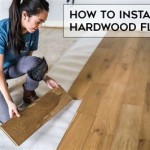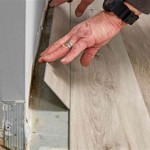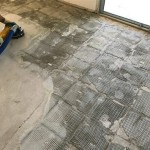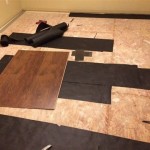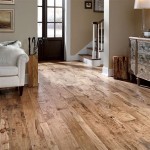Can Particle Board Be Used As Subfloor?
Particleboard is a type of engineered wood product made from wood chips, sawdust, and resin. It is a popular choice for subflooring because it is inexpensive, easy to install, and provides a smooth, level surface for flooring materials.
However, there are some important things to consider before using particleboard as subflooring. Particleboard is not as strong as plywood or OSB subflooring and it is not water resistant. If the subfloor is exposed to moisture, it can swell and buckle, causing the flooring material to fail.
There are also some specific requirements that must be met when using particleboard as subflooring. The subfloor must be installed over a moisture barrier and it must be fastened to the joists with screws or nails. The screws or nails must be spaced no more than 6 inches apart and they must penetrate the joists by at least 1 inch.
If you are considering using particleboard as subflooring, it is important to weigh the pros and cons carefully. Particleboard is a good choice for subflooring if it is installed properly and protected from moisture. However, if you are not sure if particleboard is the right choice for your project, it is best to consult with a professional.
Pros of Using Particle Board as Subfloor
There are several advantages to using particleboard as subflooring, including:
- Cost-effective: Particleboard is one of the most affordable subflooring options available.
- Easy to install: Particleboard is lightweight and easy to cut and install.
- Smooth surface: Particleboard provides a smooth, level surface for flooring materials.
- Versatile: Particleboard can be used in a variety of applications, including residential and commercial construction.
Cons of Using Particle Board as Subfloor
There are also some disadvantages to using particleboard as subflooring, including:
- Not as strong as plywood or OSB: Particleboard is not as strong as plywood or OSB and it is not suitable for use in areas where there is heavy traffic or weight.
- Not water resistant: Particleboard is not water resistant and it can swell and buckle if it is exposed to moisture.
- Requires a moisture barrier: Particleboard must be installed over a moisture barrier to protect it from moisture.
- Must be fastened securely: Particleboard must be fastened to the joists with screws or nails spaced no more than 6 inches apart and penetrating the joists by at least 1 inch.
Conclusion
Particleboard can be a good choice for subflooring if it is installed properly and protected from moisture. However, if you are not sure if particleboard is the right choice for your project, it is best to consult with a professional.

Why Particle Board Subfloors Are Bad Chris Loves Julia

Subfloor Options Osb Vs Particle Board New Floors Inc

Why Particle Board Subfloors Are Bad Chris Loves Julia

Subfloor Options Osb Vs Particle Board New Floors Inc

Subfloor Options Osb Vs Particle Board New Floors Inc

Particle Board As A Flooring Solution
Can I Use A Particle Board As Subfloor Quora

Why Particle Board Subfloors Are Bad Chris Loves Julia

Particle Board Underlayment Pros Cons And Cautions Home Efficiency Guide

Diy Painted Osb Floors Mmmm Teal Dans Le Lakehouse
See Also
